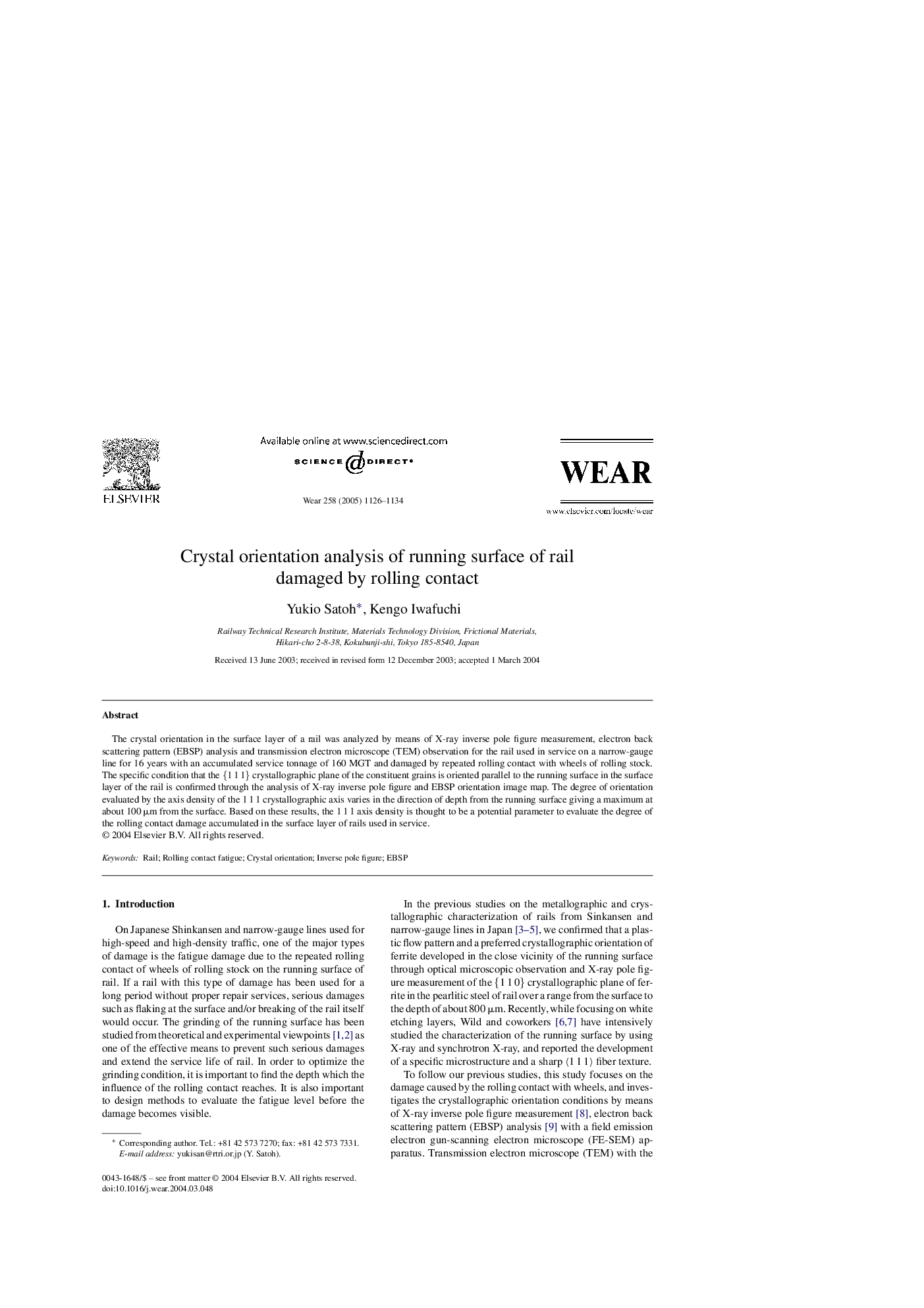| Article ID | Journal | Published Year | Pages | File Type |
|---|---|---|---|---|
| 9679531 | Wear | 2005 | 9 Pages |
Abstract
The crystal orientation in the surface layer of a rail was analyzed by means of X-ray inverse pole figure measurement, electron back scattering pattern (EBSP) analysis and transmission electron microscope (TEM) observation for the rail used in service on a narrow-gauge line for 16 years with an accumulated service tonnage of 160 MGT and damaged by repeated rolling contact with wheels of rolling stock. The specific condition that the {1 1 1} crystallographic plane of the constituent grains is oriented parallel to the running surface in the surface layer of the rail is confirmed through the analysis of X-ray inverse pole figure and EBSP orientation image map. The degree of orientation evaluated by the axis density of the 1 1 1 crystallographic axis varies in the direction of depth from the running surface giving a maximum at about 100 μm from the surface. Based on these results, the 1 1 1 axis density is thought to be a potential parameter to evaluate the degree of the rolling contact damage accumulated in the surface layer of rails used in service.
Related Topics
Physical Sciences and Engineering
Chemical Engineering
Colloid and Surface Chemistry
Authors
Yukio Satoh, Kengo Iwafuchi,
